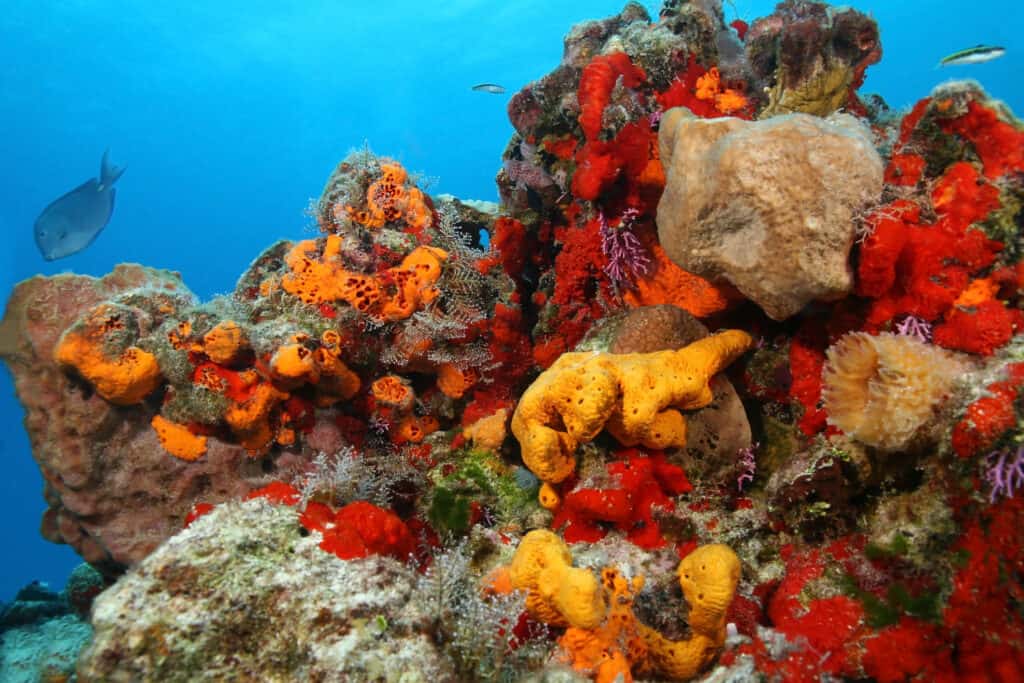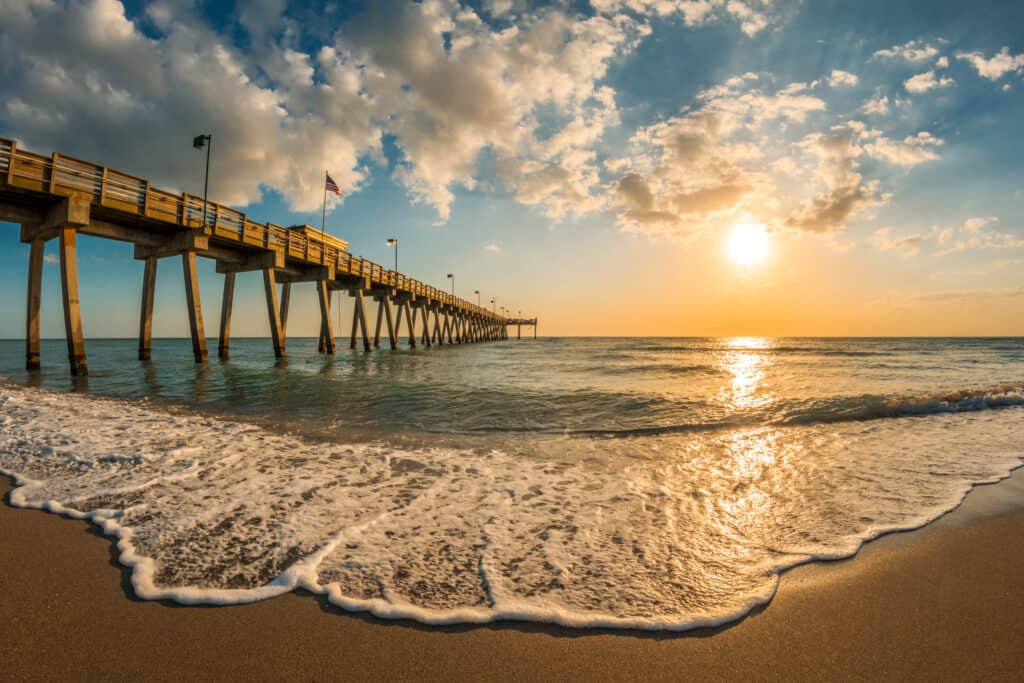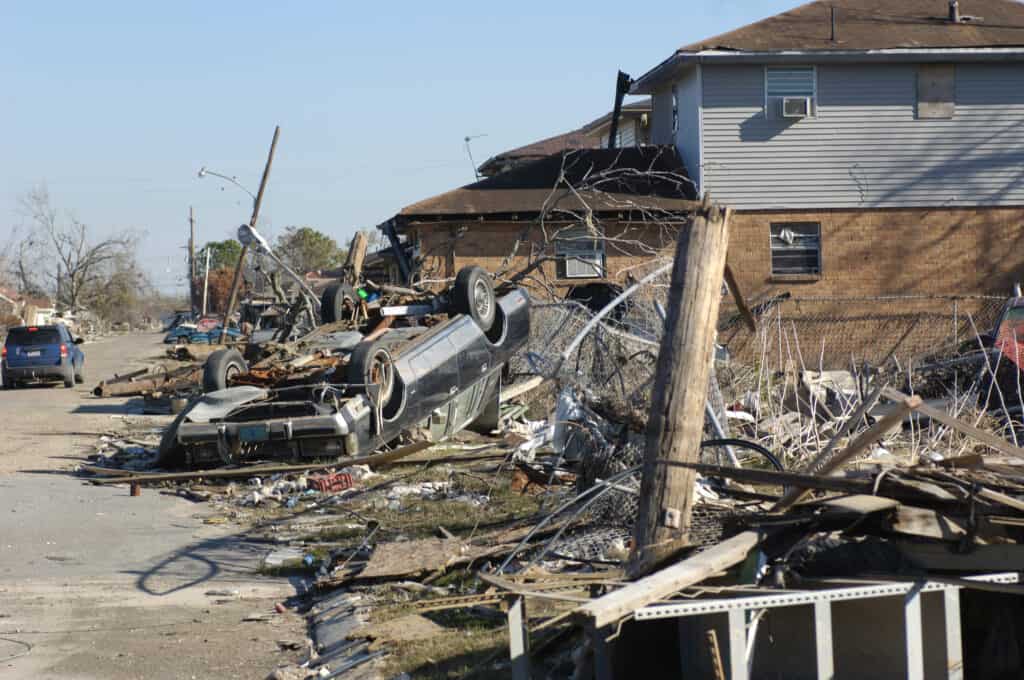Looking at a map you may not realize that the Gulf of Mexico is the ninth-largest body of water in the world. Because the Gulf of Mexico borders a portion of Mexico, Cuba, and five states – Florida, Alabama, Mississippi, Louisiana, and Texas, it is divided into seven regions based on specific geological and geographical factors. Regardless of region, the Gulf of Mexico has a striking diversity of flora and fauna that support fish, sharks, dolphins, and countless other marine life.
Various waterfowl, shorebirds, coral reef, and endangered sea turtles establish their habitats in the Gulf of Mexico which is crucial to their survival. Efforts to protect and conserve the thriving ecosystem found here are a serious priority as continuous ecological discoveries are being made and new species are being discovered.
While the Gulf of Mexico was once the source of colonization and discovery for early explorers, today it’s known for its four major industries – oil and gas, shipping, fishing, and tourism. These four industries produce nearly $234 billion annually. Oil and gas interests generate about $124 billion, nearly half the sum generated by all industries combined.
Tourism accounts for $100 billion annually and in 2008 the fishing harvest from five Gulf states totaled $661 million. The Gulf of Mexico produces nearly 20% of all U.S. crude oil. Unfortunately, oil spills have caused irreparable damage while overfishing, pollution, and more threaten this critical resource.
Besides the economic importance of the Gulf of Mexico, there are countless natural treasures to be found. Boasting some of the world’s most diverse coral reef ecosystems in the Caribbean and Florida, the Gulf of Mexico also is home to black coral, which is the oldest living marine organism currently known.
With so much marine life dependent upon the delicate ecosystem the future of the Gulf of Mexico depends on the proper management of resources and conservation of marine life.
How deep is the Gulf of Mexico? We have not only provided the answer to the question here but have also explored more interesting facts about the Gulf.

This colorful coral reef is in the Gulf of Mexico near Cozumel.
©Brian Lasenby/Shutterstock.com
How Far Until You Reach the Seafloor of the Gulf of Mexico?
The average depth of the Gulf of Mexico is approximately 1,600 meters, or 5,200 feet. However, in portions such as The Sigsbee Deep, which is 2 miles southwest of Brownsville, Texas, the depths reach up to 4,384 meters, or 14,383 feet!
Measuring from Florida to the Yucatan, the coastline of the Gulf measures 3,540 miles long and boasts some of the world’s best beaches. Traveling east from the warm waters of the Gulf of Mexico to the cold waters of the Atlantic Ocean, the Gulf Stream is one of the strongest currents in the world.
What’s the Deepest Point in the Gulf of Mexico?
How deep is the Gulf of Mexico at the furthest point from its surface? The Sigsbee Deep, named for the commander and surveyor Charles Dwight Sigsbee, who discovered it, is the deepest point in the Gulf of Mexico averaging between 3,750 and 4,384 meters. Located between the U.S. coast and Yucatan Peninsula, this deep rest on an area of salt beds created millions of years ago. The evaporation and filling of saltwater in the basin over the millennia created deposits and mounds that today appear as cliffs bordering Sigsbee Deep.
One escarpment has a towering drop of 1,220 meters and extends for 560 kilometers or 348 miles. Despite what we know, there is much to be discovered in the depths of the Sigsbee Deep as there has been little exploration since its discovery.
How Was the Gulf of Mexico Formed?
Before the Gulf of Mexico exists the landscape was a continuous mountain range that spanned from Central Mexico up to West Texas, Oklahoma, and Alabama where it connected to the Appalachia Mountains. However, around 300 million years ago, in the late Triassic period, plate tectonics caused rifting within Pangea, and a rich oceanic basin created what is now the world’s largest gulf.
Over the next 150 million years the gulf continued to deepen and enlarge with the movements of the earth. The Gulf of Mexico is an inlet connecting Mexico and the United States to the ocean and is a marginal sea of the Atlantic Ocean. It’s over 600,000 square miles and from east to west it covers 932 miles. Nearly half of the basin is compromised of shallow continental-shelf waters and due to the separation from the Atlantic Ocean, there are minimal tidal ranges.
What Animals Live in the Gulf of Mexico?
There is a thriving range of wildlife living in the Gulf of Mexico and along its coastlines. The wetlands here comprise nearly 30% of all wetlands in the United States. Each year millions of migratory birds trek the long journey across the Gulf to feed and mate.
Louisiana is an especially important stop along their journey between Latin America and the breeding grounds in North America with nearly 2.5 million landing each day to rest. Endangered marine species such as sperm whales and West Indian manatees are found in the gulf along with nearly 50 shark species like tiger and bull sharks.
Endangered sea turtles also use the coast as their nursery and require the Sargassum, seaweed that floats on the surface of the water, to feed, along with fish, seahorses, and other marine life. These floating feeding grounds can grow to be so large they’re detectable from space!
Are There Beaches Along the Gulf of Mexico?
Yes! You’re probably familiar with the beautiful sandy beaches in Florida or the sprawling coastlines packed with beachgoers in South Padre Island, however, there are countless beautiful beaches along the Gulf of Mexico to be found throughout Mexico, Cuba, and the U.S. With an average temperature between 84°F and 88°F the Gulf of Mexico is a perfect vacation destination.
Off the sands in Florida lies a 360-mile stretch of coral Reefs which developed 10,000 years ago during the last Ice Age. Florida’s coral reefs attract visitors from around the world and generate more than $17 billion in tourism annually. Coral reefs provide a thriving ecosystem that supports significant biodiversity in the Gulf.

Some of the world’s most beautiful beaches in the U.S., Mexico, and Cuba are on the Gulf of Mexico.
©Jim Schwabel/Shutterstock.com
Are There Hurricanes in the Gulf of Mexico?
Unfortunately, yes. Due to the warm waters, moist air, and strong current of the Gulf Steam when storms originating in the cold waters of the Atlantic Ocean move west and collide it creates the perfect conditions for hurricanes to form. Thankfully close to 80% of hurricanes formed lose strength and dissipate before reaching land. However, the hurricanes which do reach land can cause catastrophic devastation.
The strength and wind speed of a hurricane varies from Category 1, which is 74-95 mph, to Category 5, which has wind speeds over 157 mph. Additionally, the storm surge for each Category increases with severity, a Category 1 is 4 – 5 feet, while a Category 5 is 19 feet or more!
In 2005 Hurricane Katrina swept over the Gulf of Mexico and storm surges caused 53 levees to be breached which flooded 80% of New Orleans. The entire coastline felt the effects of Hurricane Katrina: 1,800 lives were lost and damages caused by the storm totaled $125 billion.
Hurricane Harvey in 2017 made land shore a Category 4 hurricane that caused historic flooding and left Houston and Southeast Texas devastated. Most areas incurred over 40 inches of rain within a 4-day period, in contrast, Nederland, Texas saw an astonishing 60 inches of rainfall! Hurricane Harvey is tied with Hurricane Katrina as the costliest in U.S. history.

Hurricane Katrina, which hit New Orleans, LA, in 2005, flooded and devastated large areas of the city, including its Ninth Ward.
©Marc Pagani Photography/Shutterstock.com
Interesting Facts About the Gulf of Mexico
- The Gulf of Mexico was a trade route dating back to the Maya civilization for ships traveling off the coast of the Yucatan Peninsula.
- Over 750 historical shipwrecks have occurred in the Gulf of Mexico, some of which date back to the 16th century.
- There are 7 barrier islands along the northwest portion of the Gulf of Mexico, one of which, South Padre Island, is the world’s longest barrier island.
- There’s a pocket of seawater in the Gulf of Mexico near New Orleans that contains salt content that’s 5 times higher than neighboring waters. The “Jacuzzi of Despair” as it’s called, is a combination of methane gas and hydrogen sulfide that kills all creatures who enter it.
- The largest artificial reef program in the U.S. is located in the Gulf of Mexico off the Alabama coast and is over 1,110 square miles.
Where is the Gulf of Mexico Located on a Map?
The Gulf of Mexico, an ocean basin and a partially enclosed sea of the Atlantic Ocean, is bordered by the North American continent, which includes Mexico and Cuba. The western curve of land that helps to make it an almost enclosed sea is the Yucatan Peninsula of Mexico, and the eastern side of the bowl is the peninsula of Florida..
Here is the Gulf of Mexico on a map:
The photo featured at the top of this post is © Anton Balazh/Shutterstock.com
Thank you for reading! Have some feedback for us? Contact the AZ Animals editorial team.






